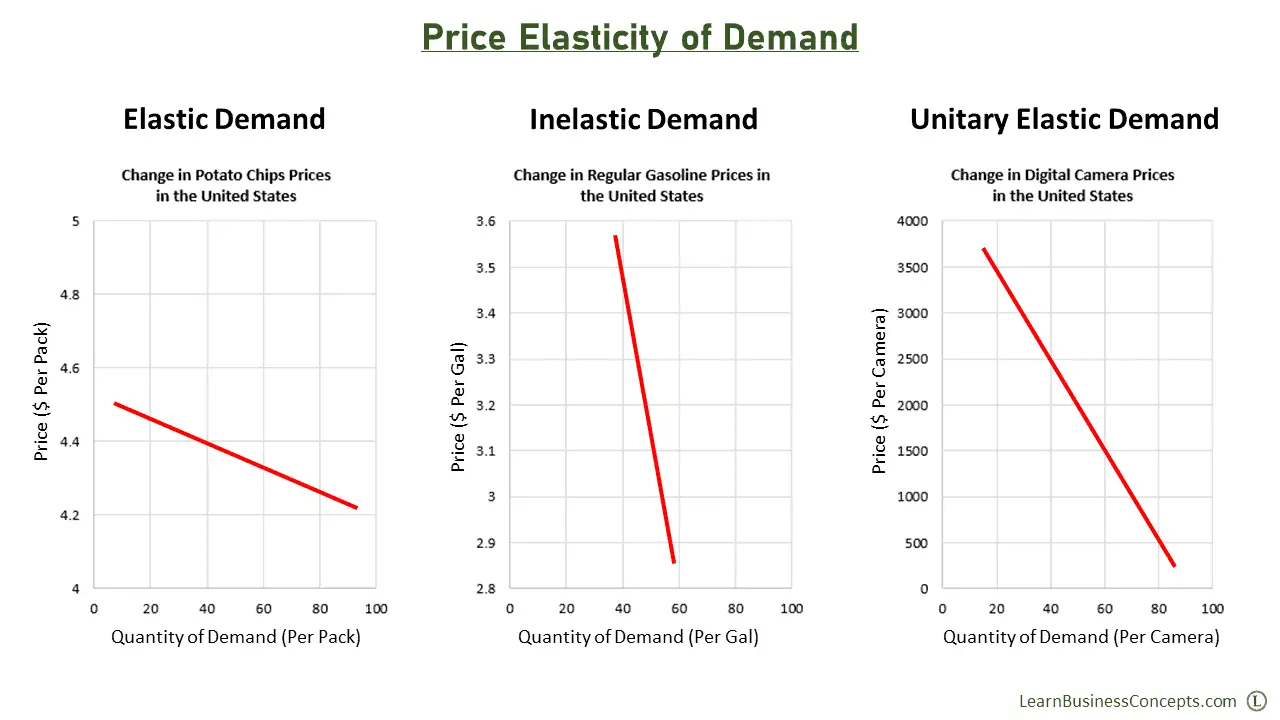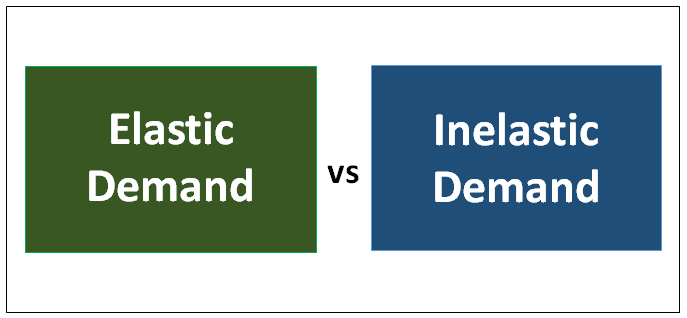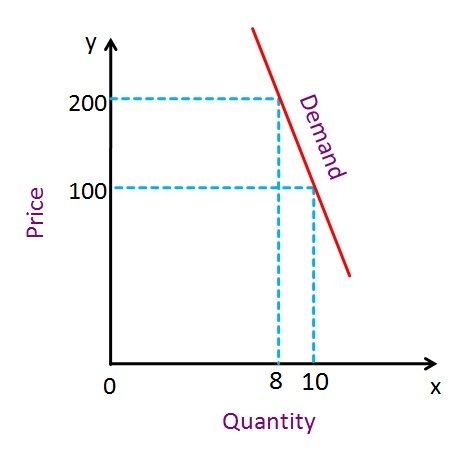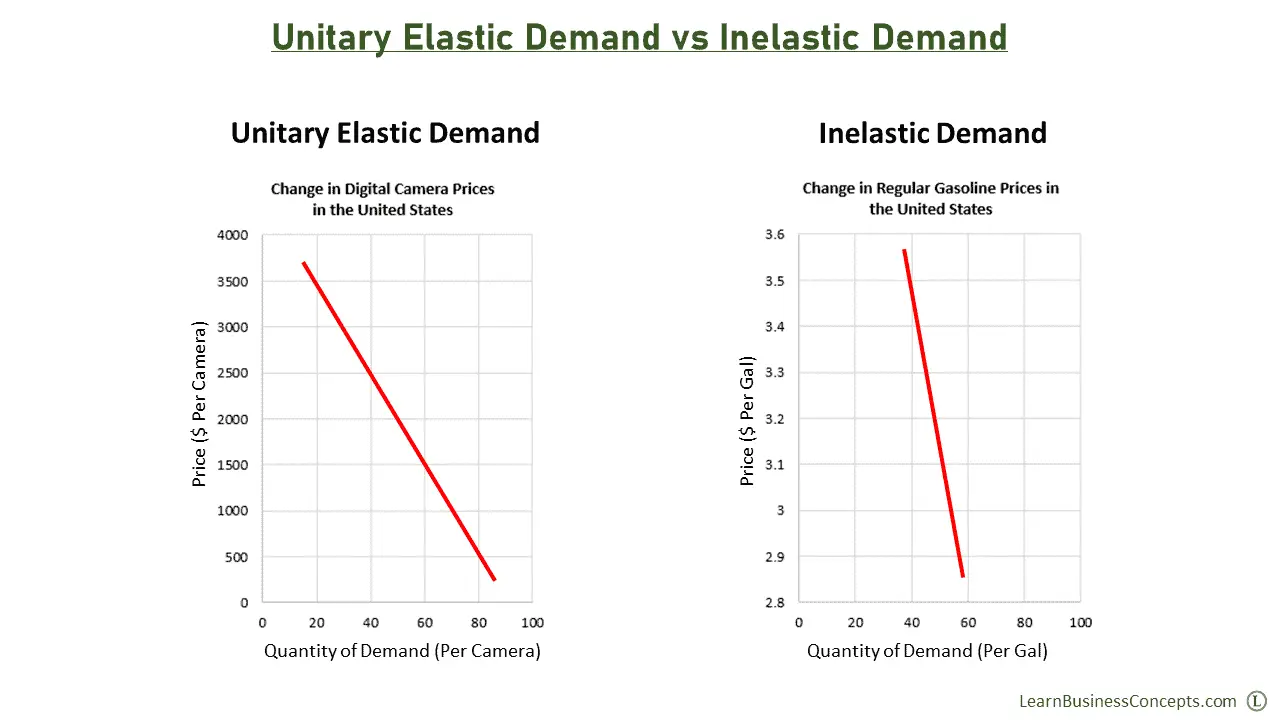Describe the Difference Between Elastic Demand and Inelastic Demand
The line drawn from the example data results in an inelastic demand curve. Price elasticity of demand measures the responsiveness of quantity demanded to change in price.

Price Elasticity Of Demand Explanation
Elastic and inelastic are both economic concepts used to describe changes in the buyers and suppliers behavior in relation to changes in price.

. If demand for a good or service is relatively static even when the price changes demand is said to be inelastic and its coefficient of elasticity is less than 10. So if we raised the price by X the quantity demanded will change by a lower percentage. The fewer closely related products are out there the more inelastic the demand curve will be.
Substitute for the product are less or unavailable. Here are some differences between elastic and inelastic demand. The more close substitutes that a product or service has the more elastic the demand curve will be.
A reduction in price does not raise demand. Inelastic demand means a change in the price of a good will not have a significant effect on the quantity demanded. 1 shows that the percentage change in quantity demanded is greater than the percentage change in price.
Perfectly inelastic demand means that prices or quantities are fixed and are not affected by the other variable. Elasticity coefficientquotient for inelastic demand is less than one. A product or service has elastic demand when its price elasticity of demand is greater than 1 unit-elastic when price elasticity is 1 and inelastic when the price elasticity is less than 1.
The demand curve for gas is inelastic. A luxury item is part of the elastic demand while an essential thing forms part of inelastic demand. A reduction in a price raises demand much and an increase in price falls demand much.
The difference between elasticity and inelasticity of demand is the proportion of this change. If there is no change then the demand is unit elastic. Demand for a product is inelastic when a price change has a relatively small effect on the quantity demand.
It is calculated by dividing the percentage change in the quantity demanded by the. This is because a competitive marketplace offers more options for the buyer. 3 rows The elastic demand refers to the negative change in the quantity demanded by the customers or.
With elastic demand demand changes more than the other variable most often price whereas with inelastic demand demand does not change even when another economic variable changes. Elastic demand means that the amount or quantity of a certain product changes in large measure when the price of the product changes particularly when the percentage of change in the quantity of the product being demanded is greater than the change in price. Substitute for the product or commodity will be available.
Goods that can only be produced by one supplier generally have inelastic demand while products that exist in a competitive marketplace have elastic demand. People are ready to pay higher prices for the necessary items. Price flexibility Companies that sell inelastic goods may have flexibility in pricing since changes in price rarely affect consumer demand for these types of products.
People are ready to pay higher prices for the necessary items. Elastic demand is where a small change in price results in a greater change in demand whereas. The primary difference between elastic and inelastic demand is that elastic demand is when a small change in the price of a good cause a greater change in the quantity demanded.
Inelastic demand the consumer is less sensitive to price changes. Inelastic demand means that consumer demand for a product does not change proportionately with a fall or rise in its. Demand for a product is elastic when a price change has a relatively large effect on the quantity demand.
Elastic demand the consumer is more sensitive to price changes. There are five types of elasticity of demand. Inelastic demand means that the amount or quantity of a certain product changes in small measure.
Elastic demand is usually illustrated by a shallow demand curve. Pp tests differences between nuclear states. The elasticity coefficientquotient for elastic demand is greater than or equal to one.
Elastic demand means consumer demand for a product changes proportionately when the price of the good or service changes. Inelastic demand is when demand changes by a smaller change than the price and the. This is because a competitive marketplace offers more options for the buyer.
If they move in the same direction then the demand is inelastic. If the changes in price and expenditure move in opposite directions then the demand is elastic. A Demand curve becomes more elastic due to the bandwagon effect.
Similar in meaning to the expansion of a rubber band elastic refers to changes in demandsupply that can occur with the slightest price change and inelastic is when the demandsupply does not. Types of Elasticity of Demand. For instance a 3 price hike leading to a 2 decrease in quantity demanded Qd.
If the demand changes by more than the. Goods that can only be produced by one supplier generally have inelastic demand while products that exist in a competitive marketplace have elastic demand.

What Is The Difference Between Elastic And Inelastic Demand Quora

Elastic Demand Vs Inelastic Demand Top 7 Useful Differences

Difference Between Elastic And Inelastic Demand With Comparison Chart Key Difference

Comments
Post a Comment